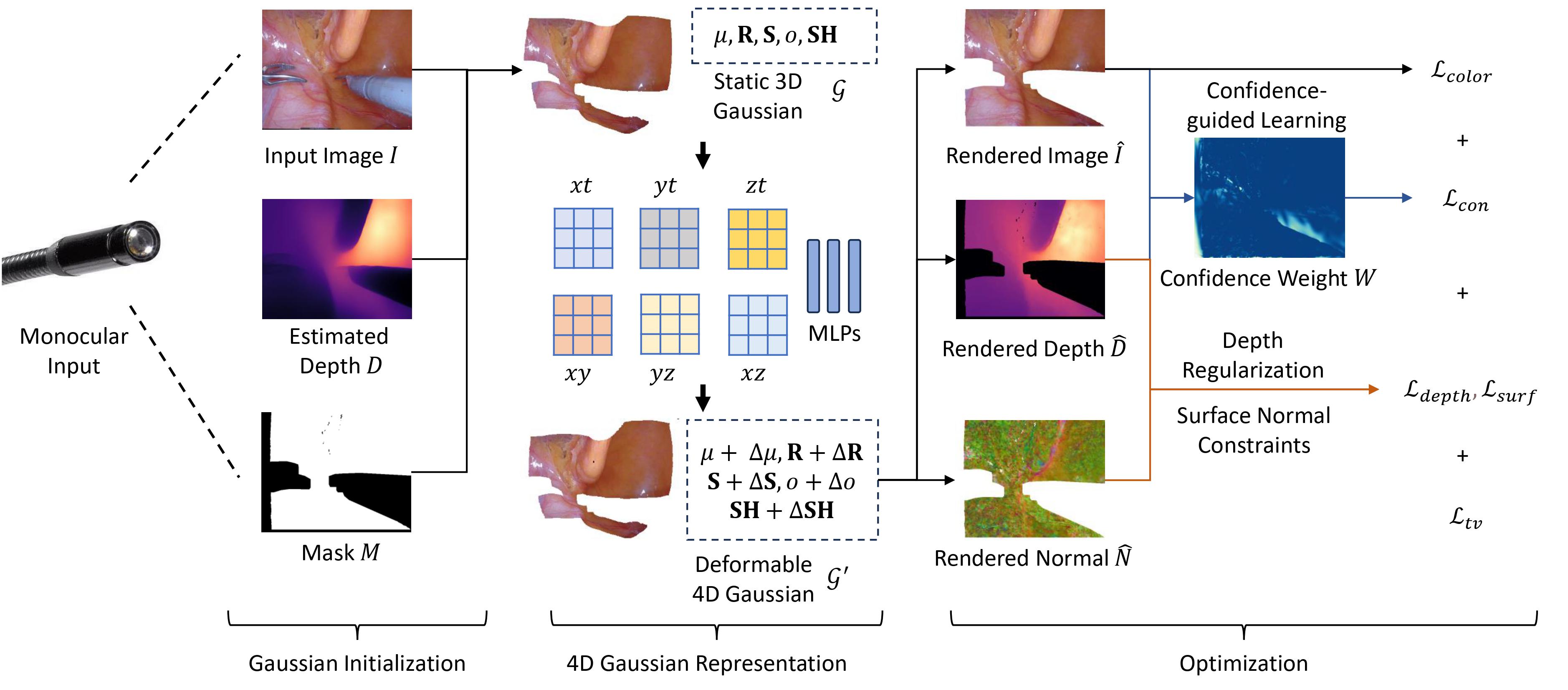- EndoNeRF
- StereoMIS
- Pretrained checkpoints
We build the Python environment using Anaconda:
git clone https://github.com/lastbasket/Endo-4DGS.git
cd Endo-4DGS
git submodule update --init --recursive
conda create -n ED4DGS python=3.7
conda activate ED4DGS
pip install -r requirements.txt
pip install -e submodules/depth-diff-gaussian-rasterization
pip install -e submodules/simple-knn
pip install torch==2.0.0 torchvision==0.15.1 torchaudio==2.0.1 --index-url https://download.pytorch.org/whl/cu118We used two datasets for training and evaluation.
We used EndoNeRF dataset provided by Yuehao Wang.
We used StereoMIS dataset from Michel Hayoz
The data structure is as follows:
./data
├── endonerf
│ ├── cutting_tissues_twice
│ │ └── ...
│ ├── pulling_soft_tissues
│ │ └── ...
│ └── ...
└── stereomis
└── ...
Download depth_anything_vits14.onnx and place in: ./submodules/depth_anything/weights/depth_anything_vits14.onnx
sh prepare_depth.shsh train.shMore configurations can be found in arguments/$DATASET.py
# Render the testing result
sh render.sh
# Evaluation
sh eval.shThanks the authors for their works: StereoMIS, diff-gaussian-rasterization-depth, EndoNeRF, 4DGaussians, Depth-Anything-ONNX.
